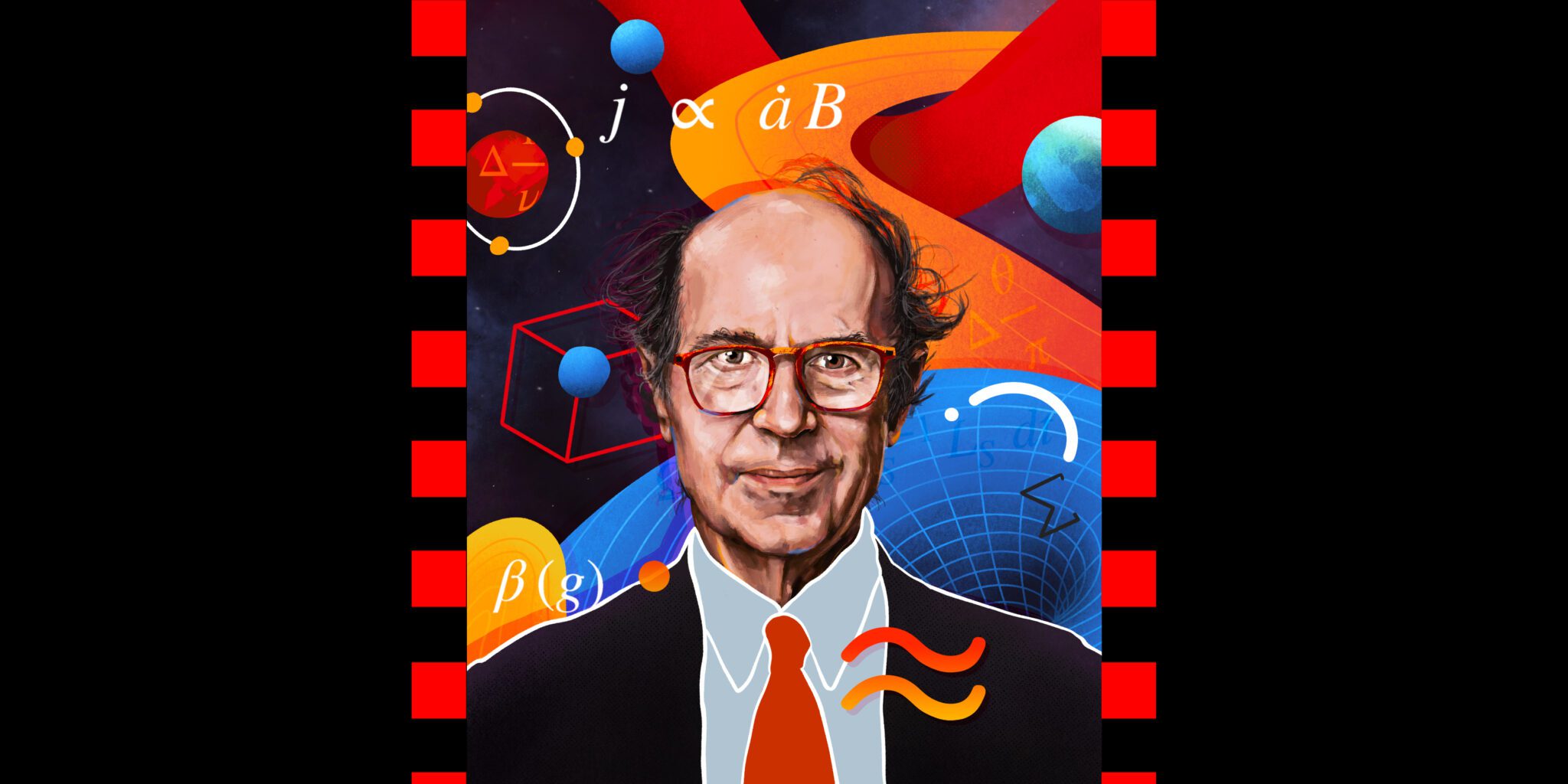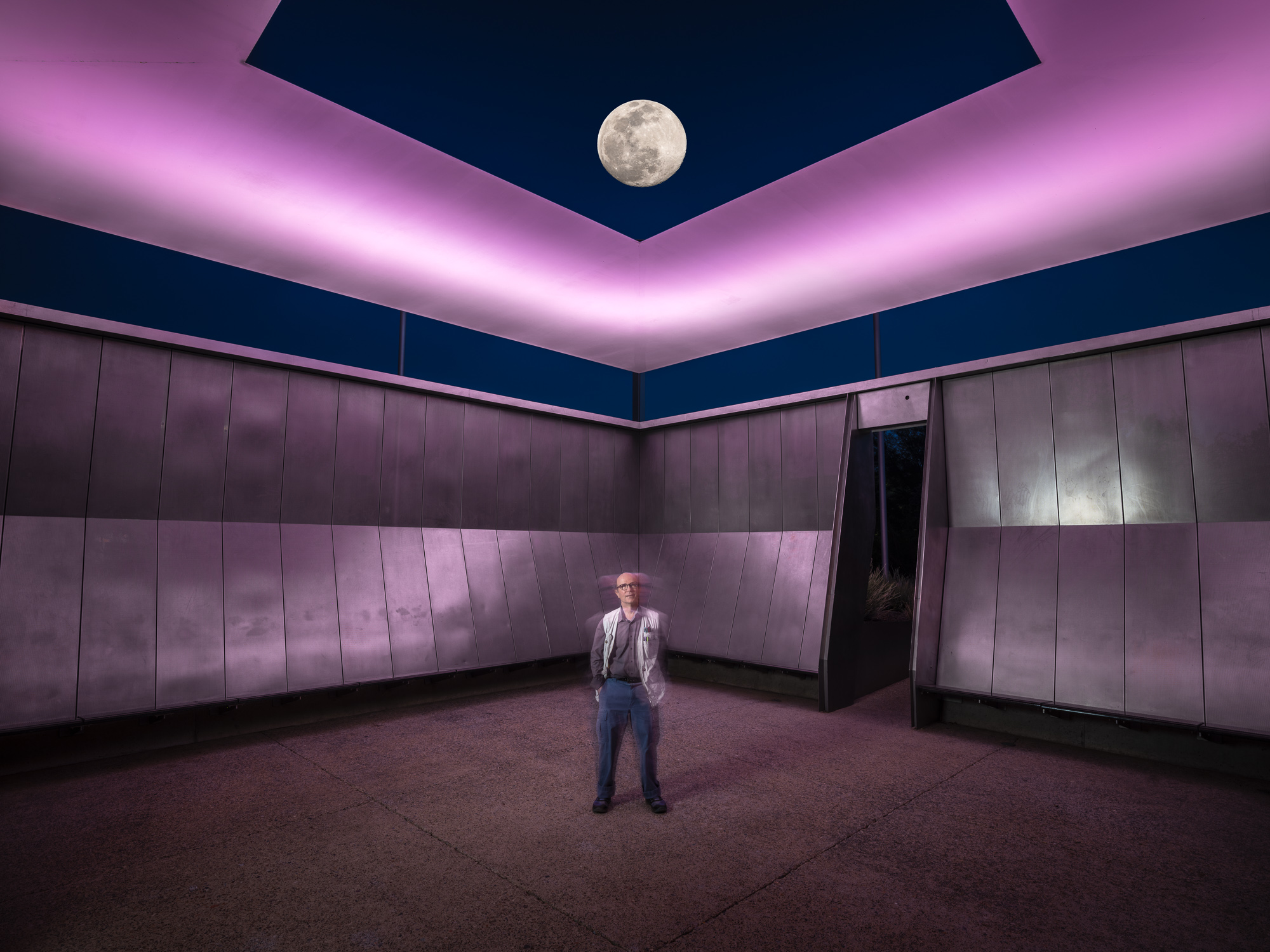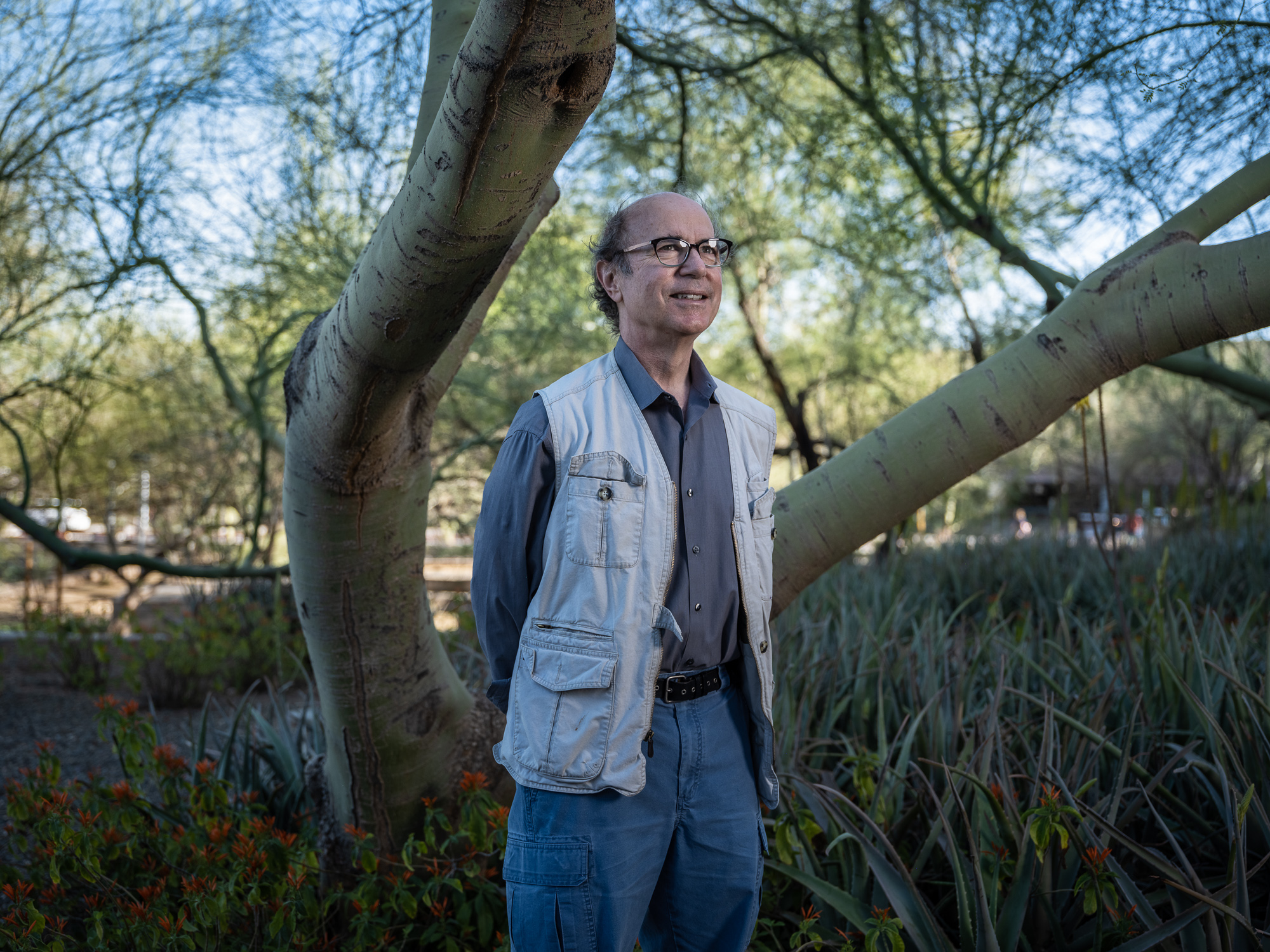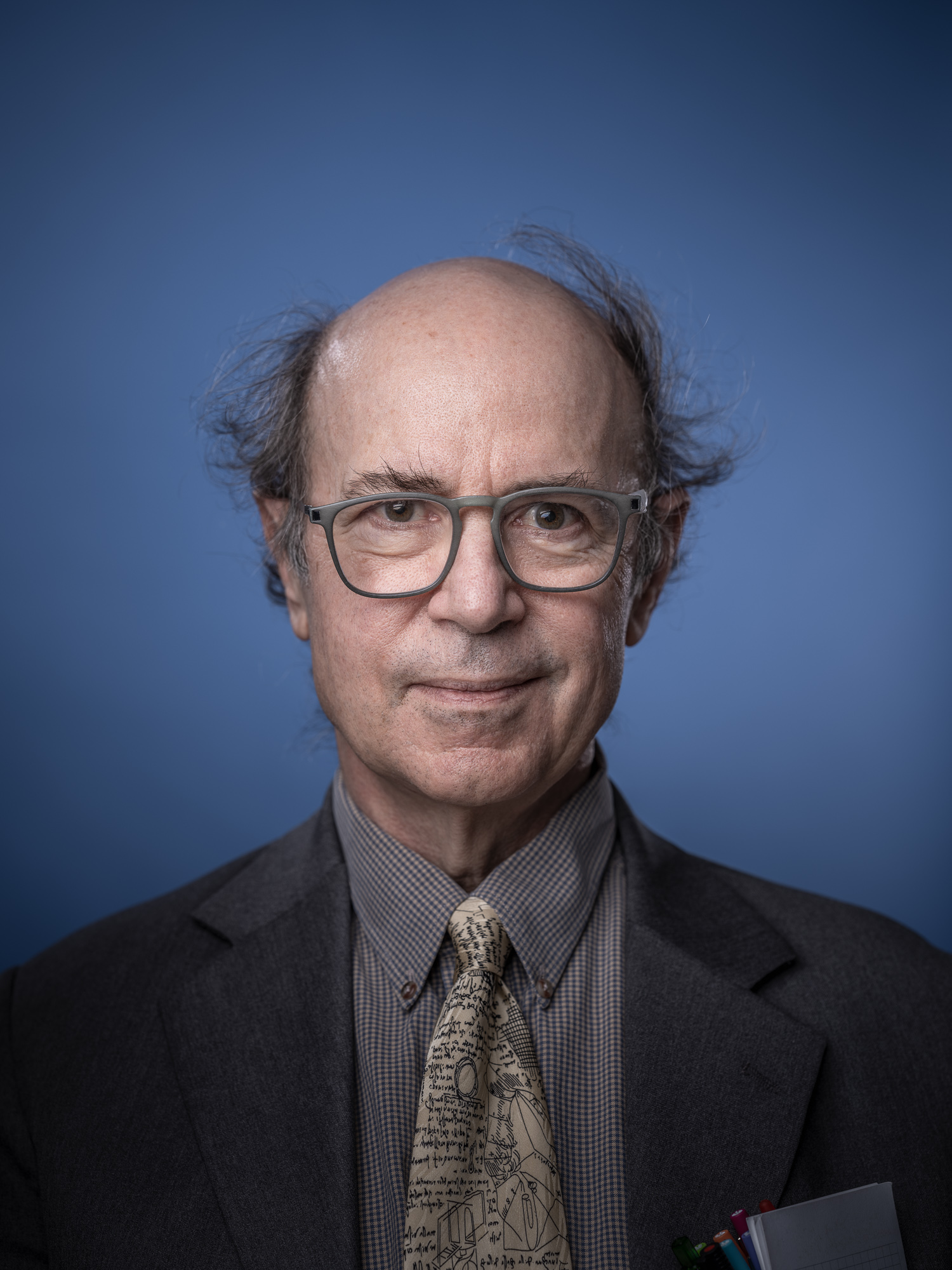When Frank Wilczek was a teenager in New York in the 1960s, he sometimes went shopping with his mother. In the store he noticed a brand of laundry detergent called “Axion.” Countless people had probably seen and used the product, but the precocious Wilczek was almost certainly the first to think it might offer a good name for an elementary particle. Wilczek seized the chance in 1978, when he realized that a potential solution to an unsolved problem in physics implied the existence of a never-before-seen particle. His proposed name: the “axion,” because it “cleaned up” the problem.
Wilczek had formidable competition. The venerable physicist Steven Weinberg, on the cusp of winning a Nobel Prize for other work, had postulated the new particle independently and suggested naming it the “Higglet.”
Wilczek won the friendly contest. But he didn’t yet know how much of a celebrity his particle would become. The axion soon became a leading candidate for dark matter, a mysterious substance that appears to pervade the universe in nearly six times the abundance of normal matter, yet is invisible, nearly undetectable, and now one of the greatest enigmas in modern physics. Physicists around the world, including Wilczek himself, are hunting it.
The anecdote also contains the elements of a singular career that has made Wilczek one of the most successful and influential physicists and physics communicators of the last 50 years: a hyperproductive creativity born of relentless curiosity and intellectual rigor, a nose for important problems that expand the horizons of human knowledge, a flare for communication and a lightness and humor that pervade everything he does.
It’s a formula Wilczek has used again and again to craft a career that has not only touched just about every major area of theoretical physics and launched a small armada of new specialties, but also reached and inspired millions of non-scientists through books, newspaper columns, collaborations with artists and public talks.
Wilczek, says Paul Davies, a physicist and director of Arizona State University’s Beyond Center, “is something of a legend in his own lifetime.”
-

Dr. Frank Wilczek photographed at Arizona State University in Tempe, Arizona. Credit: Templeton Prize/ By Michael Clark
An early triumph
Frank Wilczek is a curious, inventive and restless scientist. The curiosity and inventiveness have earned him a Nobel Prize, a MacArthur Fellowship, and now, the Templeton Prize. The restlessness has garnered, among other things, a bevy of far-flung positions and affiliations: MIT, Arizona State, Stockholm University and Shanghai Jiao Tong University in China. Only the pandemic managed—for a time, at least—to curb his ocean-hopping; he’s spent much of the past two years at home in Concord, Massachusetts, where, among other things, he’s taken up juggling.
Wilczek was born in 1951 in Mineola, New York and went to high school in Queens. He has described his upbringing as “lower middle class,” with parents who valued education and encouraged his interest in math and science, giving him plenty of toys and puzzles to play with. Early confirmation of intellectual gifts through standardized tests gave him confidence, he says. “Confidence is a very, very powerful tool for a scientist.”
He headed to the University of Chicago at 15 for undergrad, then arrived at Princeton in 1970 to study math. But he soon found his way to the research group of David Gross, a young, already well-known theoretical physicist. It was a heady time: Experiments had recently shown that the proton and neutron—long held to be fundamental building blocks of atoms—weren’t fundamental at all, but rather made of even smaller units called quarks. But physicists were baffled by why electrically charged quarks, which should powerfully repel each other at short distances, seemed to interact only weakly with each other at close range and remain bound together inside tiny sub-atomic particles.
Wilczek and Gross decided to attack the problem head on. Through what he calls “an arduous calculation” that brought in branches of math Wilczek had studied since he was a teenager (he was a finalist in the national Westinghouse Science Talent Search with a project on group theory), they developed a theory of how quarks’ interactions could get weaker as the distance between them shrank. This “asymptotic freedom”—a radical break from the familiar electromagnetic interaction that increases with shrinking distance—opened up the theory of the strong nuclear force that governs quarks’ behavior, which forms a key building block of the Standard Model, the leading theory of fundamental physics.
To peer into the nucleus and discover a new and important phenomenon that no one had ever glimpsed “was like the trembling of the veil that poets write about,” Wilczek says. “Something was stirring deep in the heart of nature.”
The work made Wilczek famous at 21 and would eventually earn Wilczek and Gross, along with David Politzer, the 2004 Nobel Prize in Physics. Wilczek soon had a tenure-track professorship at Princeton, and he could have become paralyzed by early success, or been pigeonholed as a strong force specialist. But he was just getting started, and, like the universe itself, his impulse has been to eschew stasis and ceaselessly expand his horizons.
“My style is to try to do something important and then abandon it and do something else,” Wilczek told an interviewer in 2020.
“Most people, if they do something that they feel is important, they want to keep at it, to maintain ownership. When I have an idea that’s successful and popular, that to me is a signal that my work is done.”
Smelling the equations
His next big coup was the axion. Two theorists had, in 1977, posited an explanation for another conundrum: Why does the strong force seem to preserve a certain fundamental symmetry, according to which the universe would behave the same if it were turned into its mirror image and its matter were replaced with antimatter? Wilczek, along with Weinberg, realized that the theorists’ proposed solution would also mean a new particle.
The idea took on far more significance a few years later, when Wilczek realized that particle, by then called the axion, could solve one of the biggest mysteries in physics: dark matter. Astronomers had found that at the speeds stars in galaxies move, they should be flung out into space. This discovery led most physicists to conclude that there must be enormous quantities of missing matter that interacts extremely weakly electromagnetically and produces no light, but whose gravity holds galaxies together. Wilczek and two colleagues showed that the hypothetical axion had the right properties for this “dark matter” and could have been produced in sufficient quantities during the Big Bang. The axion got another big boost when its strongest competitor, so-called “weakly interacting massive particles,” failed to appear at the Large Hadron Collider. Several groups are now building extremely sensitive facilities to try to detect axions—an entire subfield set in motion in large part by Wilczek’s intuition.
Two other Wilczek ideas have also spawned new specialties within physics. In one, he posited a particle called the anyon. Familiar particles such as the electron (which is in a class of particles called “fermions”) and photon (in the “boson” class), have quantum mechanical properties such as electric charge that must be whole numbers. By contrast, the anyon, which would exist only in two-dimensional systems, could have fractional quantum numbers.
Wilczek, by then at the University of California, Santa Barbara, recalls the genesis of the idea. He was working with a colleague at a blackboard to understand what would happen if electrons split into sub-units inside a material. “Without knowing what I was going to write in advance, I just started writing down symbols, and there was only one way to put them together that made sense,” he says. Later, at a seminar at Caltech, the physicist John Preskill asked Wilczek about the implications of such fractional numbers. While driving back to Santa Barbara and listening to Chuck Berry tapes, Wilczek says, “It all became clear to me what fractional statistics should be: you should be winding particles around each other… It kind of just unfolded, like a revelation, like taking dictation from God.” The winding makes anyon behavior highly stable by quantum standards, and several research groups are investigating their potential as building blocks of quantum computers.
The other novel proposal was the time crystal. Ordinary crystals such as table salt have atomic patterns that repeat in space. Time crystals instead repeat in time: they return to an original configuration at regular intervals. As an analogy, think of poor Sisyphus rolling his ball up a hill: every time, the ball (and Sisyphus) return to the original position—at the bottom of the hill. (Sisyphus is not, however, a time crystal because his pushing requires an input of energy.)
Wilczek had initial inklings when thinking of ideas to include in a course he was teaching. But the concept crystallized, so to speak, during a walk across England in 2011. He published two papers in 2012, one coauthored with his friend and former student Al Shapere. His wife, Betsy Devine, proposed the name.
Once again, experimentalists stimulated by Wilczek’s idea rushed to look for time crystals. The first reports of experimental evidence for time crystals appeared in 2017, just five years after Wilczek’s original proposal. Last year, researchers announced they had demonstrated one using a Google quantum computer.
The idea “was very typical Frank—it was completely orthogonal to the way [other] people think,” says Antti Niemi, a friend and professor at NORDITA, Nordic Institute for Theoretical Physics in Stockholm who hypothesizes that certain types of molecular motors found in living systems could turn out to be time crystals. Wilczek, meanwhile, wonders if they could be used to improve atomic clocks.
Whether axions are real, and what practical applications anyons and time crystals ultimately have, remain to be seen. But colleagues marvel at Wilczek’s ability to generate ideas that no one else had thought of, yet whose importance and significance is immediately obvious.
“He’s a very intuitive person,” says Niemi. “He sees the equations, but he sees beyond the equation. He thinks immediately, does this make sense in a wider context? … He smells the equation, if it smells good or not. Or if it has the beauty.”
Niemi played an important role in catalyzing another development in Wilczek’s career: as an international peripatetic. After Wilczek came to Stockholm to accept the Nobel, Niemi started lobbying him to join the faculty at his university. Wilczek was “very, very skeptical at first,” but was eventually won over, and established a new research group in the Swedish capital.
Through this group, Wilczek is now leading an effort to find the particle he named nearly a half-century ago. Because the hypothetical axion interacts so weakly with matter, physicists need to essentially “trick” it into revealing itself. Wilczek and his colleagues hope to do this by creating a special kind of antenna for axions that, when placed inside a powerful magnetic field, could induce axions to convert into easily detectable photons. The project is called Alpha, and while prototypes have been developed at Stockholm and Berkeley, the full-scale version will likely be housed at Oak Ridge National Lab in Tennessee. “It’s really got an excellent chance of getting the required sensitivity to find the axions, if they’re there,” Wilczek says. So his statement about dropping an idea into the world and then abandoning it hasn’t turned out to be entirely true.
Another colleague convinced Wilczek to help set up a project in China, which led to a position as founding director of the T. D. Lee Institute and Wilczek Quantum Center in Shanghai, which he describes as similar to a U.S. national lab. “It’s a very important medium-term project to bring China into the international scientific community in a worthy way,” he says. “There’s a tremendous hunger for research and knowledge in science there. I wish it weren’t so politically fraught.”
Wilczek’s activities in China have extended far beyond conventional science activities. He has spoken for Chinese audiences with He Shuifa, a prominent Chinese traditional painter, about the intersection of art and science and other universal human themes. Wilczek, along with Niemi and others, has also brought the two international threads together through Quantum Connections, a program of workshops and courses on topics in quantum information based in Stockholm and taught by scientists from around the world.
“Frank is really collecting this kind of brainpower around him,” says Niemi. “He’s the attraction, the magnet who gets people to come together.”
-

Dr. Frank Wilczek photographed at Arizona State University in Tempe, Arizona. Credit: Templeton Prize/ By Michael Clark
Beauty and Wonder
Some scientists are content to inhabit the comfortable world of science, and let others carry their work to the wider public. But there is also a great tradition of physicists writing for general audiences: Stephen Hawking, Richard Feynman, Brian Greene and Lisa Randall, to name a few.
As a teenager, Wilczek was inspired by reading an earlier generation of science popularizers, including Bertrand Russell, H. G. Wells, and Albert Einstein. Finding himself without teaching responsibilities at a certain point in his career, he decided to join their ranks. Along with Devine, Wilczek in 1988 published Longing for the Harmonies, which began a long-term effort to share the beauty and wonder of physics. He followed it up with The Lightness of Being, written shortly after he won the Nobel when, he says, “my regular routines were shattered.”
Wilczek’s third book, A Beautiful Question, may be his most influential and far-reaching. Physicists have long noted that their descriptions of the universe were not only accurate and precise, but also seemed to have an intrinsic, even surprising beauty. Wilczek aims to convince us that even if we cannot do physics, we can be amazed and inspired by this beauty, no differently from how we respond to works of art and music.
Wilczek then takes this idea to another level: Can beauty be not just a byproduct of science, but a fundamental principle of how the world works? In other words, can physicists use it to guide themselves to new insights, the way they use mathematical intuition, experimentation and other things? Wilczek believes they can—and they have.
“Most or all of what I do takes off from looking at the description of the world we have…like an art critic—saying, how could this have been better? And then trying to improve the equations…to explain things that don’t seem to fit,” he says. “Aesthetic guidance has been very crucial in trying to formulate new laws—and sometimes it’s worked.”
Near the end of A Beautiful Question, Wilczek devotes a few pages to complementarity—the idea that no single description of a phenomenon can be complete. The great Danish physicist Niels Bohr introduced complementarity to resolve a problem bedeviling the developers of quantum mechanics in the 1920s: in some cases, it appeared to be impossible to simultaneously determine multiple properties of a quantum system—say, the position and momentum of an electron. Bohr posited that a complete description required integrating multiple measurements.
Where Wilzcek is going with this becomes clear in his fourth book, Fundamentals, published in 2021. Complementarity, Wilczek believes, is not just about quantum mechanics; it may be one of the most important and profound gifts physics has to offer. It can be all too tempting to view not just physical objects, but important social, cultural and political issues in rigid, single-minded ways. When we do so, we can come to believe that those who don’t share our views are wrong, or even evil. The impact of such monolithic thinking can be felt every day in acrimonious debates on social media, and in our politics.
Complementarity, it becomes clear, isn’t just an intellectual interest; it’s a pillar of Wilczek’s worldview. Where others see divisions and conflict—between science and religion, say, or the West and China—Wilczek sees opportunities to weave together disparate perspectives to create a richer overall tapestry. We must hone our ability to adopt multiple perspectives, even when they are in tension, Wilczek argues, and physics can guide us in doing so. “It’s mind expanding and comforting and wise, this complementarity,” Wilczek says. “If it gets better known and more widely adopted, I think we’ll all be better off.”
He’s now working on a fifth book that will be titled Futures, which will make the case that humans “can do great things, and science tells us how, and what is possible.” He acknowledges that this may be a hard sell right now, with climate change, a major war, and social upheaval weighing on people’s minds. But Wilczek retains an optimism that “if you look at lower resolution—the bigger picture—it’s at least possible, and, I think, plausible to imagine a really bright future.”
He also writes a column for the Wall Street Journal, Wilczek’s Universe, where he engages the newspaper’s millions of readers with pithy meditations on issues in science. One recent provocative suggestion: “Do We Need an Anti-Nobel Prize?” Before the pandemic, he gave frequent public lectures on three continents; now he’s a regular on Zoom. He’s even written poetry.
Why spend so much time and effort communicating with the public, rather than with fellow scientists who might better appreciate the mathematical reasoning and finer details of his ideas? Wilczek believes that science, for all its explanatory and technological success, could—and should—be having a much bigger impact on the broader culture.
An appreciation of science “should be part of the good life,” he says. “It really is mind expanding and enriching. It should be something that many, many more people participate in.”
Our place in the universe
On May 11, Wilczek received the Templeton Prize.
“I interpret this prize as encouragement for the work I’ve already done in reaching out to the public and bringing the deep messages that come from science that should inform everybody’s life,” he says. “It’s very gratifying to know that this work is appreciated, and it gives me confidence to proceed further.”
Wilczek “epitomizes what the Templeton Foundation is going after, which is the synthesis of science and what I would call the metaphysical,” says France Córdova, president of the Science Philanthropy Alliance and a member of the prize’s judging committee. “It’s one thing to discover a law or a rule, but quite another thing to think about how does this blow open our understanding of how nature really works, and what it means to address questions of our place in the universe.”
-

Dr. Frank Wilczek photographed at Arizona State University in Tempe, Arizona. Credit: Templeton Prize/ By Michael Clark
A youthful 70, Wilczek is doing the opposite of going gently into the night. He has a list of 18 ongoing physics projects. He sprinkles laughter throughout his conversations. The word he seems to use most readily to describe his work is “fun.”
Alongside the axion search, perhaps the most ambitious of Wilczek’s current endeavors is an effort to make us better seers—literally. Color has long been a fascination of top scientists and thinkers: Newton, Maxwell and even the German poet Goethe devoted time and effort to developing color theory. We now understand the biological basis of color: the brain integrates information from three types of receptors, each tuned to a different set of frequencies, to create the palette we see. You and I may feel like we perceive the world just fine, but to Wilczek, the human visual system is woefully limited. Reading A Beautiful Question, one senses his frustration that so much electromagnetic information passes us by: ultraviolet and infrared rays for starters, but also the polarization of light and a much richer experience even of the narrow band of visible light we can see.
In 2015, Adrian Jinich, a Mexican biologist then at Harvard for graduate study, and some colleagues, inspired by Wilczek’s discussion of color, asked him to help develop a lab course for Clubes de Ciencia, an organization that creates STEM courses for Latin American students. Over two years, they developed hardware and software for a short course on expanding human color perception. It has since been delivered to hundreds of students in Mexico and several other Latin American countries, and integrated into the MIT curriculum. By the project’s end, Wilczek, who was initially hesitant about the project, found himself thanking Jinich and his colleagues for inviting him to participate.
“He has this really sweet and generous side to him, and an amazing sense of humor,” Jinich says. “You know you’re working with this genius and super-accomplished guy… but he also has a very down-to-Earth side.”
What happened next might be even more surprising: the lifelong theorist became an experimentalist. Wilczek has opened a lab at Arizona State, with a goal to expand humans’ color vision into new dimensions. In a way, he hopes to make us, visually speaking, more like mantis shrimps, which see in up to 16 channels, including UV and polarization, gaining access to a far richer and—perhaps—more beautiful view of the world they inhabit.
The project is vintage Wilczek: weaving together threads from across the frontiers of knowledge, optimistically pushing ever deeper, never satisfied with an incomplete understanding of the universe and all the potential it holds for us. And having a great time doing it.
“He’s always looking [to learn] something new,” says Niemi. “I think his motto has to be, that he has to ask himself every day, ‘what new did I learn today?’”



